Having a kitchen faucet that isn’t working correctly can be incredibly frustrating. When a faucet fails to alternate between the spray settings, it can dramatically impede one’s ability to perform simple tasks like washing dishes or filling pots and pans.
Fortunately, there are some steps you can take to get your faucet functioning properly again. In this article, we will discuss what could be causing your kitchen faucet not to divert between spray functions and how you can fix the issue. Read on for more information about troubleshooting and repairing your kitchen faucet!
Pull out Faucet not Retracting
If your pull-out kitchen faucet won’t retract, it’s likely there is a blockage of debris in the hose or spout. This can happen when food and other particles get caught inside the hose, preventing water from flowing properly. To fix this issue, you should first disconnect the sprayer from its connection point on the sink.
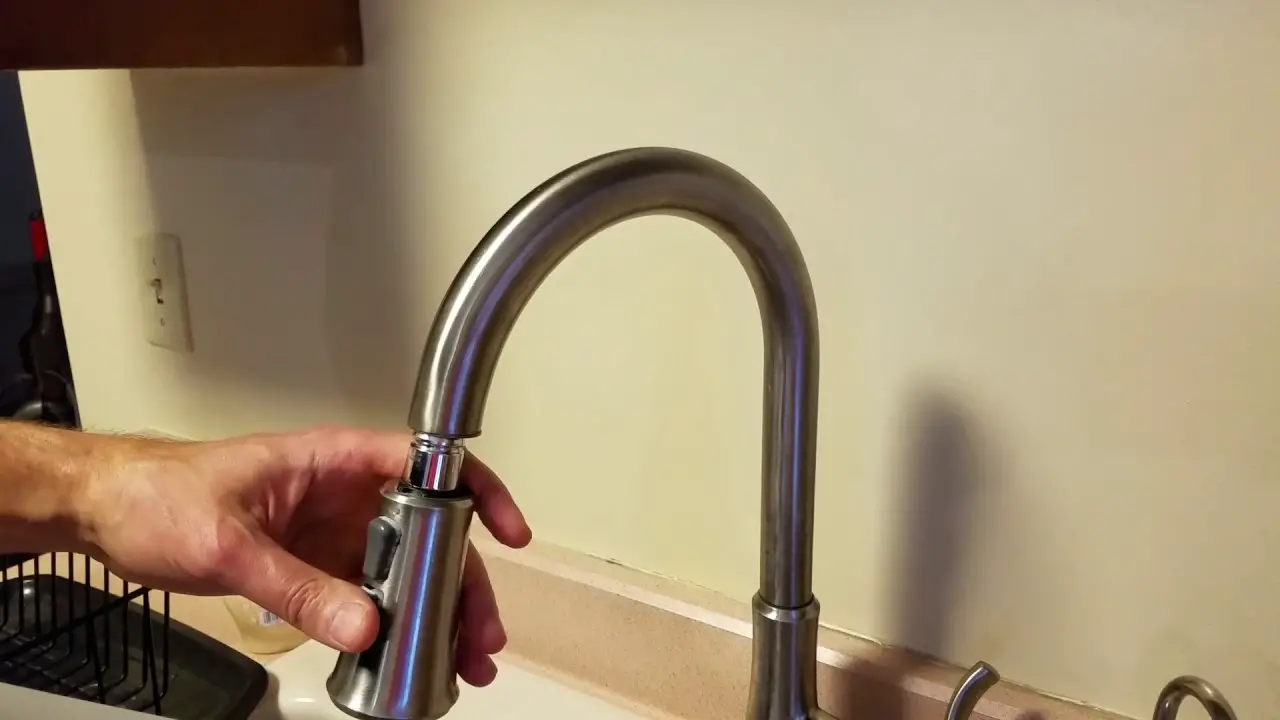
Then, inspect the hose for any blockages and remove them using a pointed tool (like a needle) or gentle detergent solution. Afterwards, reconnect the sprayer and test it out to ensure that the issue is resolved.[1]
The Non-Retractable Pull-out Kitchen Faucet Sprayer Repair
If your non-retractable pull-out kitchen faucet sprayer isn’t swapping between the functions, don’t fret – there are a few steps that can be taken to get it back in working order.
- Start by checking if the switch on your sink is working correctly. If it is stuck in one position and will not move, it may need to be replaced.
- If that doesn’t work, try removing the spray head from the faucet and check if the diverter valve is properly connected. It should be firmly secured in place within the housing so that when water pressure is applied it can direct it through the spout and out of the spray head.
- If it is not secure, you may need to replace the diverter valve, or you can try resiliconing it back in place.
- If neither of these solutions works, you may need to contact a professional plumber who can diagnose and repair the problem for you.
A Clogged Diverter Valve
If your kitchen faucet isn’t switching between spray functions as expected, it could be a result of a blocked diverter valve. The purpose of the diverter valve is to divert the water flow from one outlet to another. If it becomes blocked with debris, it can interfere with the function of switching between settings. To check if this is the problem, you’ll need to unscrew the diverter from the base of the faucet and remove it. Use a mirror and light to inspect the valve for any blockages, then clean or replace if necessary. If your kitchen faucet still won’t switch between spray functions after cleaning or replacing the diverter valve, there could be an issue with the faucet diverter itself.
The solution to a Clogged Diverter Valve
If you have tried the steps above and find that the diverter valve is clogged, there are a few things you can do to try to fix it. Firstly, remove the diverter valve from the faucet and inspect it for any blockages or dirt. If it looks dirty, thoroughly clean it using a cloth soaked in warm, soapy water. If the valve appears to be free of any blockages, it is likely an internal issue and will need to be replaced. If the diverter valve is too difficult to remove, then a plumbing snake can be used to attempt to clear out any blockages.
Be sure to use caution when using this tool as it can damage the plumbing if used incorrectly. If all else fails, it may be time to call a plumber in order to get professional help with your diverter valve issue.
Low Water Pressure
If your faucet is not diverting between spray functions, it could be due to low water pressure. To fix this issue, check for any clogs in the aerator or shower head and clear them if necessary. You can also inspect the water supply lines for any blockages and replace them if necessary. Additionally, you may need to adjust the water pressure regulator, which is typically located near the main water shut-off valve.
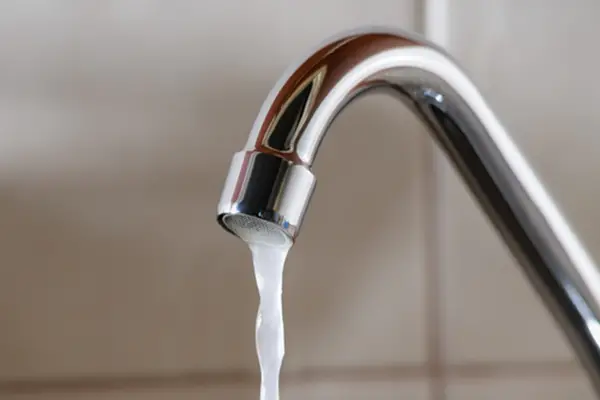
The Solution to Low Water Pressure: Cleaning the Aerator
One of the most common causes of low water pressure in kitchen faucets is clogged or dirty aerators. An aerator is a small screen that filters debris, sediment and other particles from the water and is usually found at the end of the spout. If your kitchen faucet’s water pressure is weak, there’s a good chance that its aerator needs to be cleaned. Fortunately, this is a relatively simple task that can be done without any special tools.
To clean your kitchen faucet’s aerator, start by unscrewing it from the end of the faucet spout. Then, soak the aerator in a small bowl filled with white vinegar and let it sit for 30 minutes. After half an hour, take the aerator out of the vinegar and scrub off any remaining debris with a toothbrush. Finally, put the aerator back in place and turn on the water to check if it has increased the water pressure. If the water pressure is still low, you may need to replace the aerator.
A Leaking Pull-out Hose
If your kitchen faucet isn’t properly diverting between spray functions, the problem could be coming from a leaking pull-out. Over time, these hoses can become loose or may need to be tightened up. If you spot any water leaking from the base of the hose where it comes out of the spout, then you likely need to tighten up the hose.
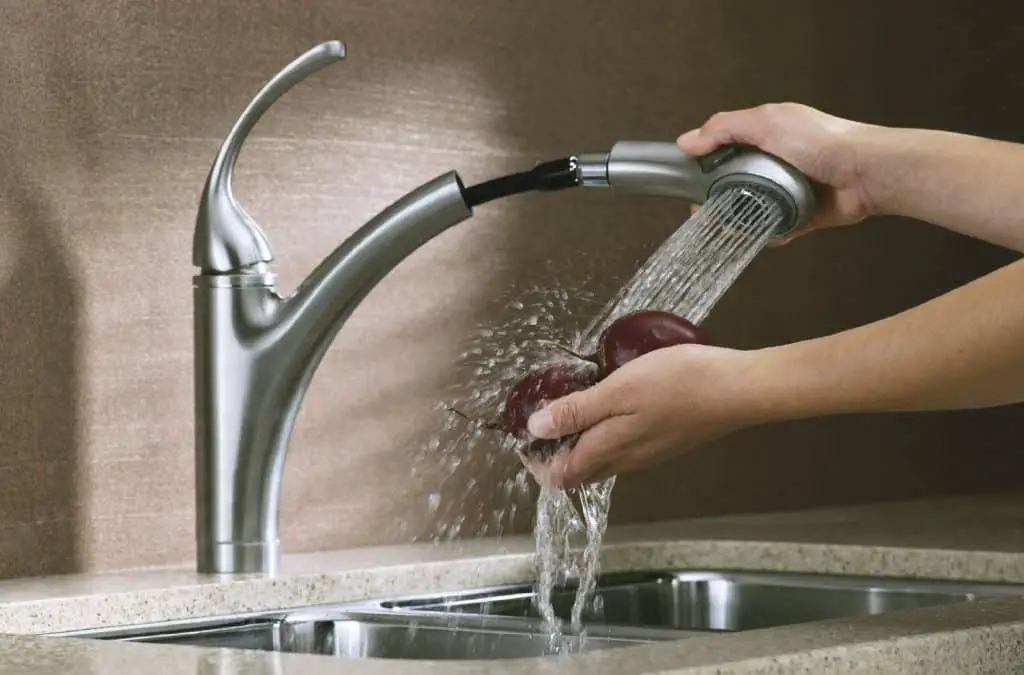
To do this, you’ll need a set of adjustable pliers and an adjustable wrench.
The Solution to a Leaking Pull-out Hose
If your pull-out hose is leaking, chances are that there’s a gap between the faucet and the spray head. The air gap allows water to escape from the faucet when pressure builds up during use. Replacing this part with a new one should fix your issue. Another common problem that can cause a kitchen faucet not to divert between spray functions is a clogged diverter valve. If this is the case, then you’ll need to disassemble the faucet and clean out the valve with vinegar or an appropriate cleaner. Once it’s been cleaned, reassemble the parts and test out the faucet to see if it now works correctly. If not, it is likely necessary to completely replace the valve. Lastly, a worn-out O-ring or gasket inside the faucet could also be causing your problem. In order to fix this issue, you’ll need to remove and replace the worn part with a new one.
A Leaking Spray Head
If there is a leak from the spray head itself, the diverter may need to be replaced. Shut off the water source to your faucet and unscrew the hose from its spray head. Usually, this will require unscrewing the spray head or using pliers to loosen some of the fittings. With an adjustable wrench, remove the diverter from the faucet.

The Solution to a Leaking Spray Head
If your kitchen faucet’s spray head is failing to switch between a normal stream and the spray mode, while also leaking water, there are several strategies you can use to address this dilemma. The first step is to check for any loose or broken parts within the faucet itself. If you find any parts that appear to be broken or missing, you should replace them with new parts from your local hardware store. If the faucet is not leaking and everything appears to be in place, you will need to check the diverter valve. This part is located within the faucet handle and can become clogged over time due to debris buildup. You can use a pair of pliers to gently remove the clog, allowing water to flow freely again. If this does not solve your problem, it may be necessary to replace the diverter valve altogether.[3]
Faucet Spout and Body Doesn’t Sit Perfectly on the Cradle
If your kitchen faucet is not switching between spray functions, it could be because the spout and body of the faucet are misaligned with its cradle. If your sink isn’t level, or if the cradle has shifted out of place over time, it can cause misalignments in the connecting parts. To fix this issue, try to adjust your sink or cradle so that it’s level and the faucet body is sitting in the right spot. If you can’t get it to fit properly, you may need to contact a plumber for assistance.
The Solution to a Faucet Spout and Body not Sitting Perfectly on the Cradle
If your kitchen faucet spout and body aren’t sitting properly on the cradle, it’s likely due to an incorrect installation. To fix this issue, you’ll need to ensure that the spout is properly aligned with the cradle. To do this, look for any signs of misalignment such as a gap between the two parts. If you find one, gently loosen the mounting screws and adjust the spout until it sits snugly against the cradle. Additionally, check the mounting hardware to make sure it’s not worn out or damaged. If so, replace it with new hardware. Once you’ve made sure the spout and body are properly aligned, re-tighten the mounting screws. If you’re still having trouble fitting the spout and body together on the cradle, it’s time to contact a plumber for help.
Sticking Water Handle
If you are having difficulty flipping the water handle on your kitchen faucet between spray functions, it could likely be attributed to an issue with either the handle itself or the diverter valve. To diagnose which issue it is, use a screwdriver to remove the faucet handle and inspect the inner workings. If there is no obvious damage, you can try lubricating the diverter valve with some silicone-based grease or WD-40. If the handle still sticks, then the problem is likely with the diverter valve itself and it will need to be replaced.
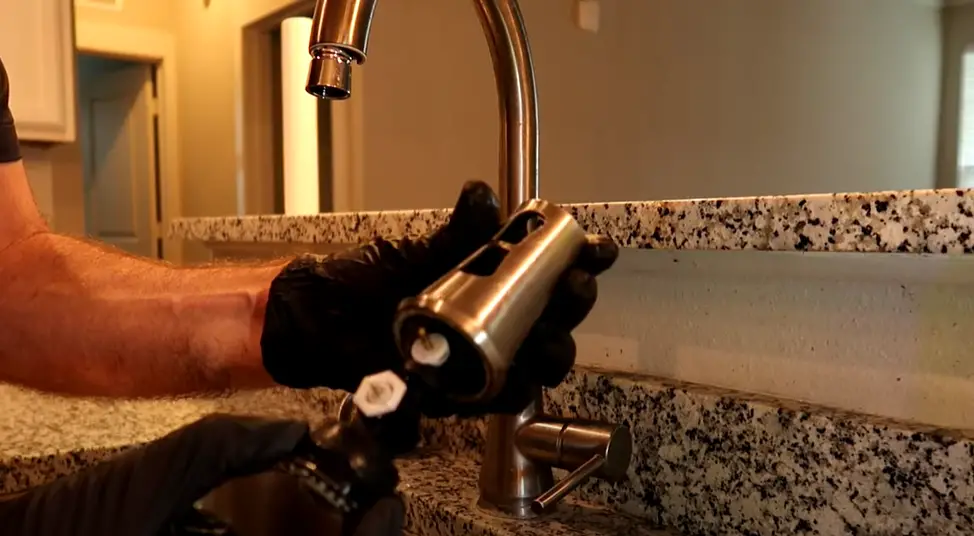
The Solution to a Sticking Water Handle
If your kitchen faucet handle is sticking, the diverter valve may be blocked or clogged. This can restrict the water flow and cause the handle to become stiff and difficult to operate. To fix this problem, start by removing the handle from the faucet body. The diverter valve is typically located behind the handle and can be accessed by lifting it off.
Once the handle is removed, you should be able to see the diverter valve. To clean the diverter valve, use a damp cloth and a cleaning solution to gently scrub away any buildup.[2]
Helpful Tips for Fixing Faucet Problems
If your kitchen faucet isn’t diverting between spray functions, there are a few potential solutions you can try.
One easy and economical fix is to clean the diverter valve. This is located inside the faucet’s body, and can sometimes become clogged with debris or mineral deposits. Using a small brush or cloth, carefully clean the valve and surrounding area to remove any blockages.
If this doesn’t work, it may be possible to replace the faucet cartridge. In some models, this part can become worn or damaged over time and no longer function properly. Luckily, the parts are relatively inexpensive and easy to replace yourself with a few simple tools.
Fixing a Kitchen Faucet That Won’t Divert Between Spray Functions
If your kitchen faucet is stuck and won’t divert between spray functions, it can be frustrating. Here’s a comparison of common issues, troubleshooting steps, and solutions to fix the problem.
| Common Issue | Troubleshooting Steps | Solutions |
|---|---|---|
| Stuck Diverter Button | Remove the handle or button cover. Inspect and clean the diverter. Reassemble the faucet. | Ensure smooth operation of the diverter. Replace damaged parts if necessary. |
| Blocked Hose or Aerator | Disconnect the spray hose. Inspect for blockages and remove them. Clean or replace the aerator. | Ensure free water flow through the hose and aerator. Reconnect the hose securely. |
| Diverter Valve Issue | Turn off water supply. Disassemble the faucet to access the diverter valve. Inspect and replace the diverter valve. | Use a manufacturer-specific replacement part. Reassemble the faucet and test for correct operation. |
Explanation of the table:
This table provides a comparison of common issues related to a kitchen faucet that won’t divert between spray functions, troubleshooting steps to identify the problem, and corresponding solutions. Whether it’s a stuck diverter button, a blocked hose, or a diverter valve issue, understanding these problems and applying the right fixes can restore the faucet’s functionality.
FAQ
How do you fix a spray diverter?
If your kitchen faucet spray diverter is not functioning properly, there are a few steps you can take to troubleshoot the problem. First, inspect the diverter or “valve” for any visible signs of damage. If you find any cracks in the valve, replace it with a new one. If the valve appears to be in good condition, check for any blockages or obstructions that may be preventing the diverter from functioning properly. If there are no visible signs of damage or blockage, you may need to remove the spray head from the hose. Clean any debris from the spray head, and make sure that all of the O-rings and washers are in place. If the issue persists, you may need to replace the spray head.If you have replaced the valve and still find that your diverter is not functioning properly, then you may need to replace the entire faucet. Depending on the type of faucet and installation method, this can be a complex task and should be done by a qualified plumber.
How do you fix a stuck kitchen faucet sprayer?
If your kitchen faucet sprayer is stuck, it usually indicates a broken diverter valve. To eradicate the difficulty, you’ll need to switch out the diverter valve. To achieve success, try doing the following:
- Disconnect the water line supplying your kitchen faucet to cut off its flow.
- Use an adjustable wrench to remove the sprayer hose from the faucet.
- Unscrew the diverter valve from the faucet body.
- To replace the old diverter valve, firmly secure a new one using an adjustable wrench.
- Re-attach the sprayer hose to the faucet.
- Activate the water source and check that your faucet is operational.
Why is my kitchen sink sprayer not spraying?
If your kitchen sink sprayer is not spraying, there are a few potential causes. It could be an issue with the diverter valve (which is responsible for diverting water between the sprayer and regular faucet functions), a build-up of debris or mineral deposits in the lines, or a problem with the sprayer’s hose assembly.
How does a kitchen faucet spray diverter work?
The kitchen faucet spray diverter is a small mechanical device located at the end of the faucet spout. It works by redirecting the flow of water between the faucet’s spray head, aerator, and sometimes even a side-spray. The diverter allows you to switch between spray functions with the simple turn of a dial or lever.
How do I know if my kitchen faucet diverter is bad?
A kitchen faucet diverter is a small valve at the end of the spout that controls the flow of water from either the faucet or the sprayer. A malfunctioning diverter can cause water to not flow correctly from either the faucet or the sprayer. Signs of a bad diverter can include water leaking from the bottom of the spout, water not flowing evenly from either the faucet or the sprayer, or water not diverting properly between the two when switching from one to the other.
How do you clean a kitchen faucet diverter?
Cleaning the diverter of a kitchen faucet is an important part of regular maintenance for your fixture. To begin, it is essential to shut off the water source leading to your faucet. This can be done by turning off the valves located under the sink. Now, utilize a flathead screwdriver to detach the faucet handle. This will reveal the diverter, which is a small cylindrical piece of metal. Using a damp rag, carefully clean off the diverter to remove any dirt or debris. Finally, re-assemble the faucet and turn the water back on. This should restore your faucet’s ability to switch between spray functions. If not, it may be time to replace the diverter.[3]
How do you fix a stuck diverter valve?
If your diverter valve is stuck, the first step to fixing it is to identify the cause. The culprit may be a lack of lubrication, clogs in the line, a faulty valve stem, or build up of debris. If you believe the issue to be a lack of lubrication, you can try applying a penetrating oil to the valve stem until it loosens. However, if you think that the problem may be caused by a clog, you will need to remove the diverter valve and clean out the lines and connections thoroughly. You may also need to replace the valve stem if it is damaged or worn. If the diverter valve is still not functioning properly, you may need to replace it with a new one. Reinstalling a new diverter valve is a straightforward process that involves unscrewing the old valve from the faucet body and replacing it with the new valve.
How do I know if my diverter valve is broken?
If you’ve tried all of the above steps and are still having trouble getting your kitchen faucet to divert between spray functions, it’s possible that your diverter valve is broken. You can easily check this by removing the aerator and inspecting the valve. If it’s clogged with debris or not switching properly, it could be the issue. In this scenario, you must replace the valve to ensure proper functioning. This can be done by a professional plumber or by following the manufacturer’s instructions for self-installation.
How do you replace a diverter valve on a kitchen faucet?
Replacing a diverter valve on a kitchen faucet is relatively easy and can be done with basic tools. The steps are as follows:
- Ensure the water supply to your faucet is shut off. This can usually be done by turning the valves located under the sink counter clockwise.
- Remove the faucet handle by unscrewing the base of it with a Philips head screwdriver, depending on the model.
- Unscrew and remove the trim ring or escutcheon plate and access the diverter valve.
- Detach the diverter valve by loosening the retaining nut.
- Make sure to take note of any special instructions included on the faucet’s installation manual before replacing the valve.
- Install the new diverter valve and reassemble the faucet following the instructions from step 3 in reverse.
- To validate the functionality of your faucet, turn on the water and check that it correctly diverts between spray functions.
How do you unclog a faucet sprayer?
If the diverter on your kitchen faucet is stuck and won’t switch between spray functions, the first thing to try is cleaning out the diverter. To do this, you’ll need to shut off the water supply and unscrew the faucet handle. You should then be able to access the diverter and clean it with a scrub brush. If the issue persists, you may need to replace the parts in the faucet.
You can also try to unclog the sprayer with a solution of white vinegar and water. Start by removing the aerator and soaking it in a bowl of vinegar-water solution. Clean your aerator with a soft brush after approximately 30 minutes of soaking. Rinse the aerator with clean water and put it back in place. If that doesn’t work, you may need to take apart the sprayer and clean it piece by piece.
How do you clean a clogged pump sprayer?
If the sprayer nozzle is clogged, you may need to clean it out. To do this, first turn off the water supply and disconnect the sprayer hose from the water supply line. Next, remove the nozzle and clean it with warm, soapy water and a toothbrush or pipe cleaner. You may also need a small, flat-head screwdriver to pry out any stubborn debris. Once the nozzle is clean, replace it and reattach the hose to the water supply line. If you find that your sprayer is still not diverting between functions, then it may be time to replace it.
Why won’t my kitchen faucet switch between spray functions, and what can I do to address this issue?
A kitchen faucet that won’t switch between spray functions may be due to a clogged or malfunctioning diverter valve. To address this issue, you can start by cleaning or replacing the diverter valve, which is typically located under the faucet spout.
How do I clean a clogged diverter valve in my kitchen faucet to restore proper spray function?
To clean a clogged diverter valve in your kitchen faucet, first, turn off the water supply to the faucet. Remove the faucet spout by unscrewing it from the base. Locate the diverter valve and carefully clean it using a brush or cloth to remove any debris or mineral buildup. Reassemble the faucet, and test if the spray functions work correctly.
What steps should I follow to replace a malfunctioning diverter valve in my kitchen faucet if cleaning doesn’t resolve the issue?
If cleaning the diverter valve doesn’t fix the issue, you may need to replace it. Start by turning off the water supply, removing the faucet spout, and taking out the old diverter valve. Install a new diverter valve according to the manufacturer’s instructions, reassemble the faucet, and test the spray functions.
Are there any specific maintenance tips to prevent future problems with the diverter valve in a kitchen faucet?
To prevent future problems with the diverter valve, regularly clean the faucet, remove any debris from the aerator, and keep the spout free of mineral buildup. Additionally, ensure that all connections are tight and that the faucet is not subjected to excessive wear and tear.
When should I seek professional assistance for issues with my kitchen faucet’s spray functions that I can’t resolve myself?
If you’ve tried cleaning or replacing the diverter valve and still can’t resolve the issue with your kitchen faucet’s spray functions, it’s advisable to seek professional assistance from a plumber or faucet repair specialist. They can diagnose and fix more complex problems and ensure the faucet functions correctly.
Useful Video: Kitchen Faucet Sprayer Wont Switch to Stream
Conclusion
If your kitchen faucet is not diverting between spray functions, there are a few things you can try to get the issue resolved. Begin by inspecting the sprayer hose, faucet handle and aerator for any blockages or damage. If you cannot find any, then try to reset the diverter valve by disassembling the faucet and cleaning out any debris that might be present. If this doesn’t fix the issue, then check the water lines for any kinks or bends that could be preventing the flow of water. If all else fails, then you should call a plumber to inspect the faucet and repair it if necessary.
References
- https://homeguides.sfgate.com/fix-kitchen-faucet-diverter-40967.html
- https://www.deltafaucet.com/node/901
- https://kitcheninfinity.com/pull-out-spray-kitchen-faucet-problems-and-solutions/
- https://www.nytimes.com/1983/05/01/nyregion/home-clinic-fixing-a-faulty-kitchen-sink-spray-can-be-a-simple-matter.html











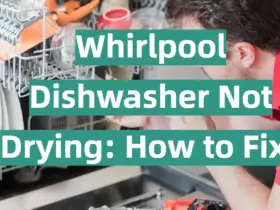
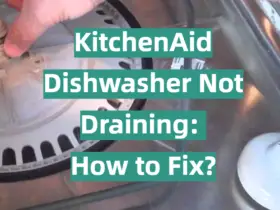
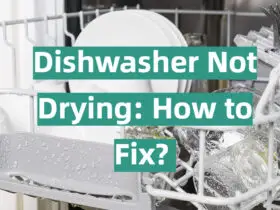
Leave a Reply